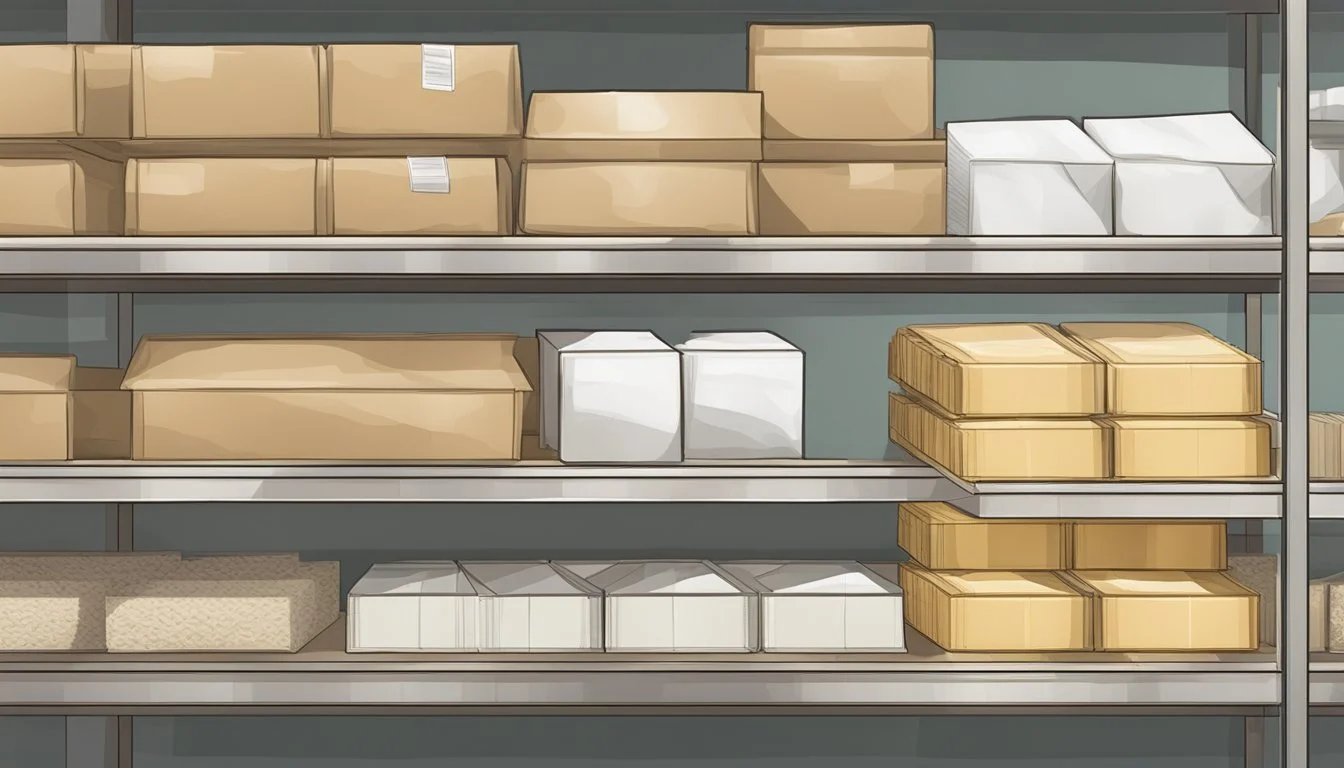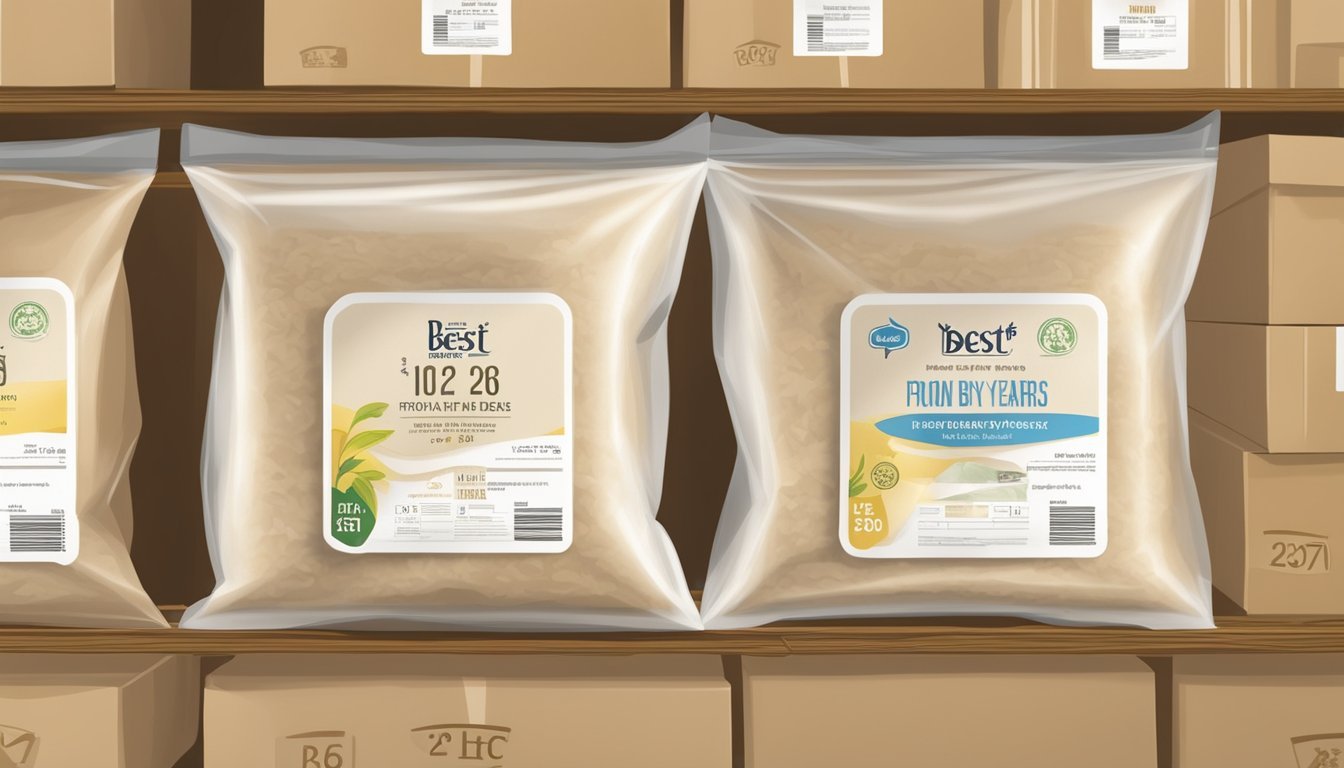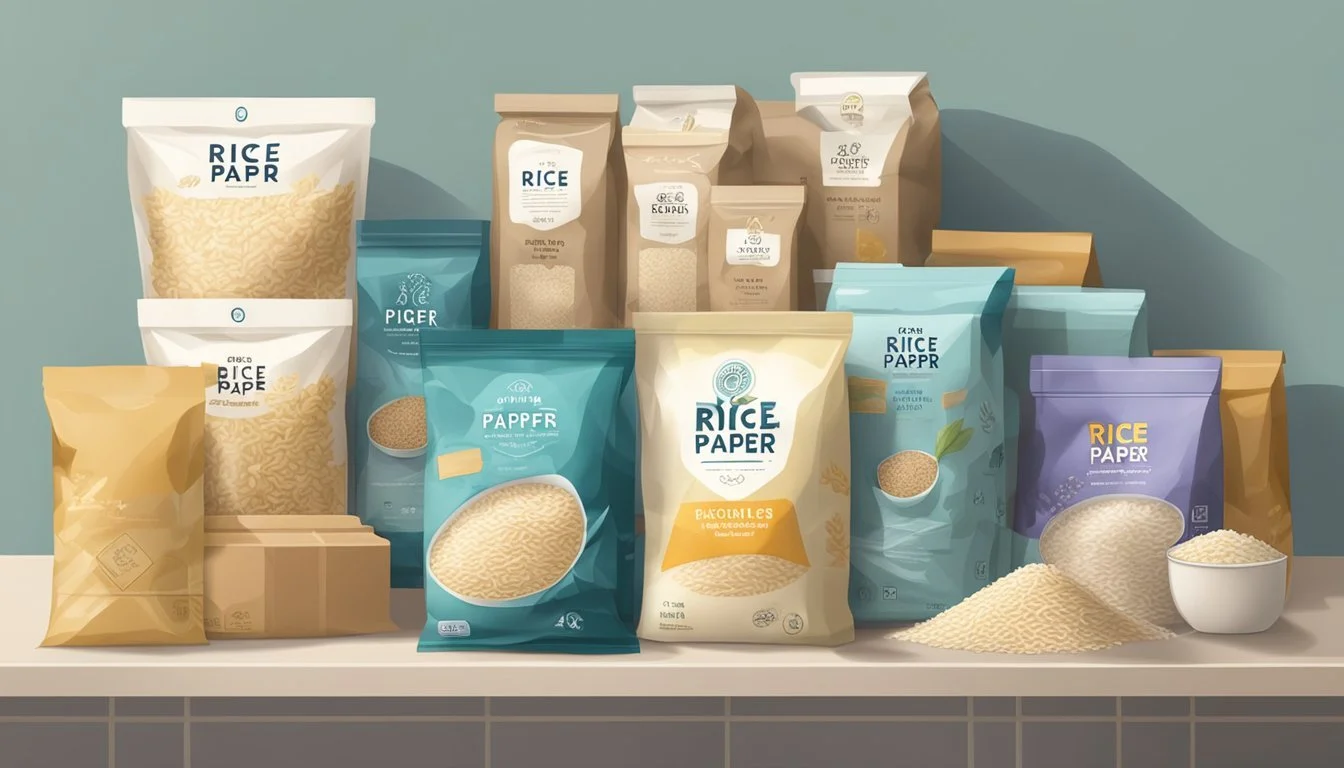How Long Does Rice Paper Last?
Shelf Life and Storage Tips
Rice paper is a versatile ingredient used in a variety of culinary applications, particularly popular in Southeast Asian cuisine for dishes like spring rolls. Its shelf life is a common question for both professional chefs and home cooks, as maintaining the freshness and quality of rice paper is crucial for creating the desired outcome in recipes. Generally, uncooked rice paper can last about a year when stored correctly, which includes keeping it in a cool, dry place away from moisture. Moisture is the enemy of rice paper, causing it to stick together and lose its desirable texture.
Once a package of rice paper has been opened, the remaining sheets should be transferred to an airtight container to prevent them from drying out and becoming brittle. This step helps to preserve the quality of the rice paper for future use. Opened packages of rice paper typically have a shelf life of roughly two months, although this can vary depending on the specific storage conditions. Factors such as humidity, temperature, and exposure to air can all affect the longevity and edibility of rice paper.
Proper storage directly impacts the shelf life and usability of rice paper, with the consensus being that a cool, dry pantry is adequate for unopened packages. Some sources suggest that refrigeration may extend the storage time and effectiveness of rice paper, though it is not strictly necessary. Quality can decline past the expiration date, therefore, it is advisable to monitor the rice paper's condition and use it within the recommended time frames to ensure the best results in cooking.
Understanding Rice Paper
Rice paper is a unique product widely recognized for its versatility in Asian cuisine, playing a key role in traditional dishes like spring rolls and summer rolls. Its translucent appearance and pliable nature make it a favorite for wrapping savory and sweet ingredients.
Composition and Features
Rice paper is primarily composed of rice flour, (how long does rice flour last?) making it a gluten-free option for cooking and baking purposes. Its distinctive translucent quality is achieved when rice batter is spread thin and dried. This results in a delicate, almost see-through texture that becomes pliable and sticky when moistened. The simplicity in its composition contributes to rice paper's lengthy shelf life under optimal storage conditions.
Main Ingredients:
Rice flour
Tapioca flour (in some varieties)
Water
Salt
Types and Uses in Asian Cuisine
Rice paper is incredibly versatile, manifesting in various forms to suit different culinary applications within Asian cuisine. Vietnamese rice paper is notably used for making spring rolls and summer rolls, where they are filled with ingredients like shrimp, fresh herbs, and vermicelli noodles (how long do vermicelli noodles last?).
Common Uses:
Wrapping for fresh rolls
Wrapper for fried rolls
Ingredient in desserts and sweets
The type of rice paper used can affect the texture and taste of the dish it becomes a part of, whether it serves as a delicate container for fresh greens and herbs in a summer roll or as a crispy exterior for fried spring rolls.
Initial Storage and Packaging
Proper initial storage and packaging are essential to maintain the quality and extend the lifespan of rice paper. Ensuring that these delicate sheets are kept in optimal conditions will prevent them from becoming unusable due to moisture or other storage mishaps.
Optimal Storage Conditions
Rice paper should be stored in a cool and dry place to ensure its longevity. The location should be away from any sources of heat and not exposed to direct sunlight, as this can cause the rice paper to become brittle and lose its pliability. The primary goal is to regulate the environment to prevent any moisture absorption, which is detrimental to the rice paper's texture and usability.
Temperature: Room temperature is ideal, specifically temperatures that are consistently cool.
Humidity: Low humidity levels are crucial to avoid the rice paper absorbing moisture from the air.
Unopened Packaging Preservation
Rice paper's original packaging is designed to protect it from environmental factors. When unopened, the packaging should keep the rice paper in a satisfactory condition for up to six months. To preserve the rice paper even further, consider transferring it into an airtight container after purchase or wrapping it securely in plastic wrap if the original packaging isn't resealable. This provides an additional barrier against moisture and air exposure, further extending its shelf life and freshness.
Intact Packaging: Do not open until ready to use to maintain the protective environment.
Repackaging Options: If not in a resealable package, utilize plastic wrap or an airtight container for best results.
Shelf Life and Expiration
Rice paper is known for its durability and long shelf life when stored properly. However, it is not impervious to spoilage and does have an expiration date to be mindful of.
Determining the Expiry Date
To ascertain the longevity of rice paper, always check the packaging for a best-by or use-by date. Unopened rice paper can last approximately six months to a year in proper conditions. Once opened, it should be used within about two months for optimal freshness. The shelf life may vary depending on the ingredients and the brand, therefore, adhering to the manufacturer's guidance is crucial.
Signs of Spoilage and Deterioration
Rice paper that has gone bad will exhibit clear signs of spoilage. It is important to inspect for mold growth, which appears as spots or fuzzy patches, potentially in various colors. Another indicator is discoloration, where rice paper may develop an off-color reflective of deterioration. A musty or rancid smell is also a telltale sign that the rice paper is no longer suitable for consumption. If any of these signs are present, the rice paper should be discarded to avoid the risks associated with consuming spoiled food.
Proper Rice Paper Handling
Rice paper is a delicate product used in many Asian cuisines, particularly for making rolls. It requires careful handling to maintain its integrity from storage to preparation. The two critical aspects of handling rice paper are preventing damage and tearing during storage and employing effective techniques for preparing and soaking before adding the filling.
Preventing Damage and Tearing
To prevent rice paper from becoming damaged or torn, it's essential to store it properly. One should:
Store unopened rice paper in a cool, dry place away from direct sunlight, which could dry it out and make it brittle.
Keep opened packages tightly sealed in an airtight container to protect them from moisture and insects that could lead to damage.
Handle with care, as rice paper is extremely fragile; when selecting a sheet, gently separate it from others to avoid tearing.
Techniques for Preparing and Soaking
The preparation of rice paper involves soaking it in water to make it pliable for rolls. Here are steps to prepare it:
Prepare the soaking water: It should be warm but not hot, as excessively hot water can make the paper too sticky and lead to tearing.
Soak rice paper properly: Gently submerge the rice paper in water for just a few seconds. It may still seem a bit firm when removed, but it will continue to soften as it absorbs water.
Lay the paper out: After soaking, carefully lay the rice paper on a clean, wet cloth. This surface helps prevent sticking and tearing when adding ingredients for rolls.
When followed, these practices ensure that rice paper is optimally preserved for use in creating delicious, fresh rolls with your desired filling.
Extending Shelf Life
Proper storage can dramatically affect the longevity of rice paper, keeping it pliable and fresh. Key actions include regulating temperature and moisture, and using specific storage techniques.
Refrigeration Versus Freezing
Refrigeration helps in keeping rice paper fresh, especially once the packaging is opened. Rice paper should be stored in an air-tight container to prevent exposure to humidity and odors. They remain pliable when refrigerated, which is ideal for immediate use.
Freezing, on the other hand, can extend the shelf life of rice paper significantly. When freezing rice paper:
Wrap the unopened package in plastic wrap.
Place it in a freezer-safe bag to stave off freezer burn.
Ensure to thaw it in the refrigerator before use to maintain its quality.
Utilizing Oxygen Absorbers and Desiccants
Incorporating oxygen absorbers and desiccants in the storage process can enhance the shelf life of rice paper by mitigating oxidation and moisture-related spoilage. They should be:
Placed within the storage container alongside the rice paper.
Ensured that they do not come into direct contact with the food product.
Using these methods reduces risks associated with humidity and wet conditions, which are detrimental to rice paper's quality. However, the rice paper should still remain away from direct heat sources to prevent any damage.
Rice Paper in Cooking and Serving
Rice paper is a versatile ingredient in cooking, primarily used for creating rolls with a distinct chewy texture. It is a staple in Vietnamese cuisine and can adapt to diverse fillings and flavors.
Incorporating Fillings and Flavors
Rice paper serves as a neutral base that easily complements a variety of fillings. Meats such as chicken or shrimp are often used to create rich flavors within the rolls. For a vegetarian option, one can incorporate tofu or simply an assortment of vegetables. Here are common fillings:
Protein: Cooked shrimp, chicken, pork, or tofu
Vegetables: Lettuce, cucumber, bean sprouts, and herbs
Herbs: Mint, cilantro, or basil for a fresh kick
Noodles: Vermicelli or rice noodles (how long do rice noodles last?) for added texture
Rice paper rolls should be moistened before use to achieve the desired chewy texture, which makes them pliable for wrapping around the chosen fillings.
Presentation and Pairings
Presentation is key to serving rice paper rolls, where visual appeal is as important as taste. Rolls should be tightly packed to showcase the colorful cross-section of ingredients when sliced. They are typically served with a dipping sauce, like hoisin or a fish sauce- (how long does fish sauce last?)based mixture, which is essential to enhance flavors.
Pairings for rice paper rolls include:
Dipping Sauces: Hoisin, peanut, or chili-lime sauce
Sides: Pickled vegetables or a light salad
Drinks: Iced tea or light beers complement the dish well
Rice paper can also be used creatively beyond rolls, such as in dumplings or desserts, where its texture helps to create a satisfying chew. Adding salt or sweet elements can shift rice paper from savory applications to sweet.
Maintenance After Opening
When rice paper packages are opened, their shelf life decreases, making proper storage pivotal. The key to maintaining freshness and extending longevity lies in minimizing exposure to humidity and air.
Re-Sealing and Storage Best Practices
Once opened, rice paper should be kept in an airtight container or re-sealed in its original packaging. This practice is essential to prevent the sheets from becoming brittle or sticking together due to moisture. The optimal storage conditions for opened rice paper are:
Temperature: Store at room temperature.
Humidity: Keep away from humid areas to avoid deterioration.
Physical Barrier: Utilize foil or plastic wrap to secure the package before placing it back into an airtight container.
These steps will provide a barrier against moisture and maintain the rice paper's quality.
Managing Partially Used Packages
For opened packages with partially used rice paper, handling and re-storing requires care. It is recommended to:
Carefully separate sheets: If sheets are sticking together, use a dry hand or a piece of oil-free paper to assist.
Re-sealing method: Transfer the remaining sheets into a zip-top bag or an airtight container, squeezing out excess air before sealing.
Labeling: Note the date of opening on the package to keep track of freshness.
By following these techniques, one can ensure that the delicate texture of rice paper is preserved until the next use.
Troubleshooting and FAQs
In this section, readers will gain insights into addressing common issues with rice paper storage and usage, as well as learn how to optimize the longevity and quality of rice paper through expert guidance.
Common Concerns Addressed
Q: Does rice paper go bad?
A: Yes, rice paper can expire. If it's unopened and stored properly in a cool, dry place, it typically lasts up to 12 months. Once opened, consume it within 2 months to ensure quality.
Q: Can rice paper be refrigerated?
A: While it is shelf-stable, refrigeration can extend the shelf life of opened rice paper. Ensure it is sealed in an airtight container to fend off moisture and other contaminants.
Q: How can I tell if rice paper has gone bad?
A: Signs of expired rice paper include a moldy appearance, an off odor, or a stale taste. If any of these signs are present, the rice paper should be discarded.
Q: Is it safe to consume rice paper that has a strange odor or taste?
A: Consuming rice paper with a strange odor or taste is not recommended as this could indicate spoilage. It's best to err on the side of caution and discard it.
Q: What should I do with leftover rice paper?
A: Leftover rice paper should be stored in an airtight container or plastic zip bag to keep it dry and away from strong odors. Use leftovers within a few weeks for best quality.
Expert Tips for Optimal Usage
Storage Tips: Preserve rice paper's shelf life by storing unopened packages in a cool, dry place away from sunlight. For opened packages, place in an airtight container and store either at room temperature or in the refrigerator.
Use-by Date: Heed the use-by date as a guideline but also rely on a visual inspection. If the rice paper remains dry, odor-free, and intact, it can still be usable beyond the printed date within a reasonable timeframe.
Prevention of Spoiling: Keep rice paper separate from strong-smelling foods to prevent odor transfer. Additionally, avoid any kind of moisture, as this will increase the risk of mold and spoilage.
Handling Leftovers: When dealing with leftovers or precooked rice paper rolls, wrap them tightly and store them in the refrigerator for 3-4 days. Always check for any signs of spoilage before reuse.








